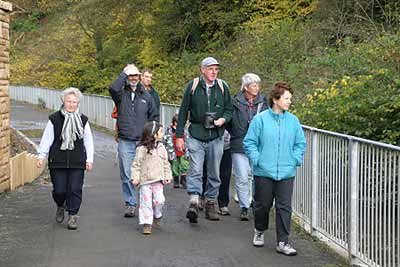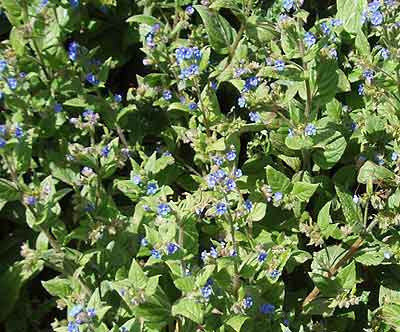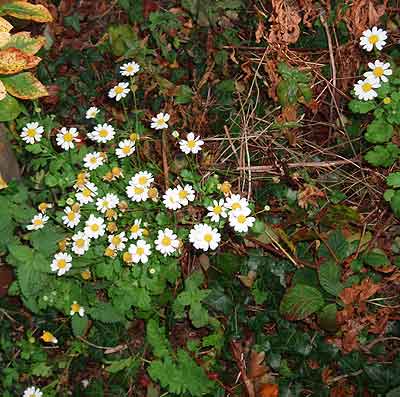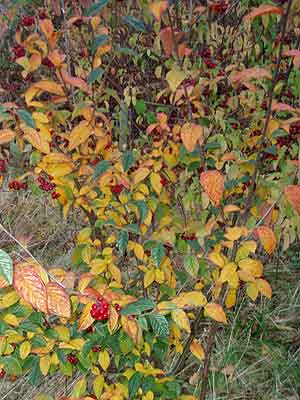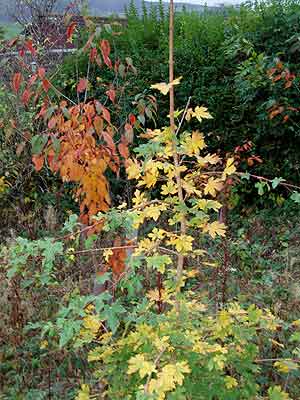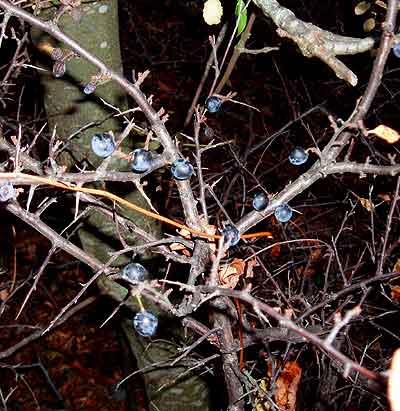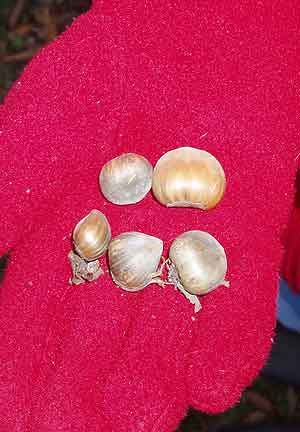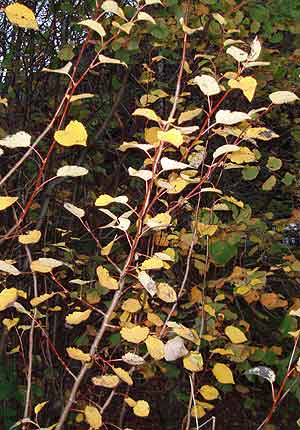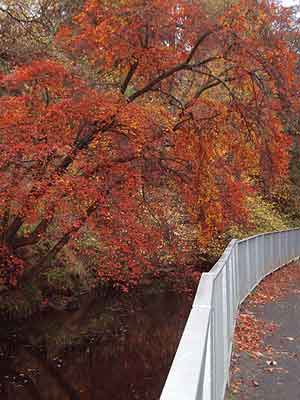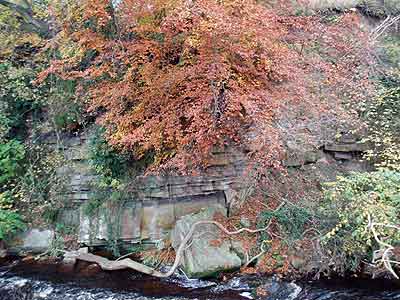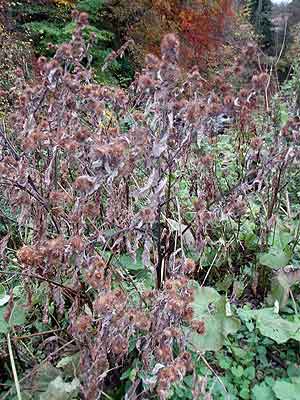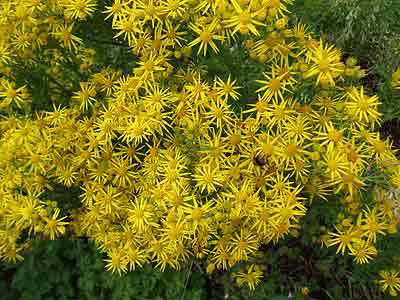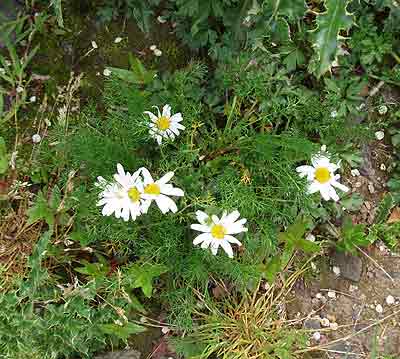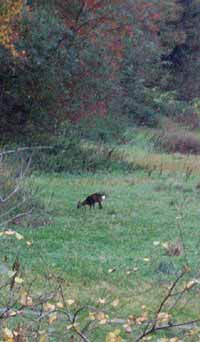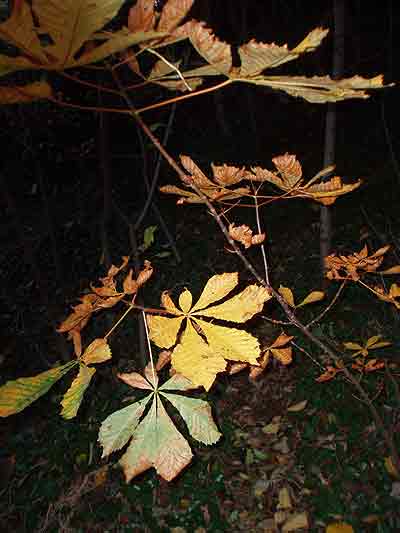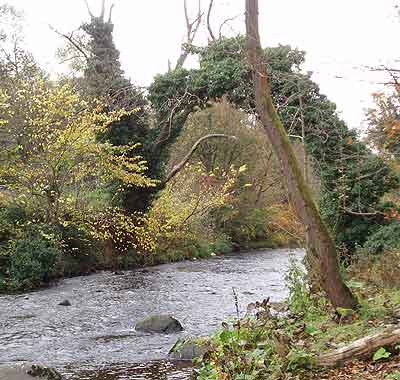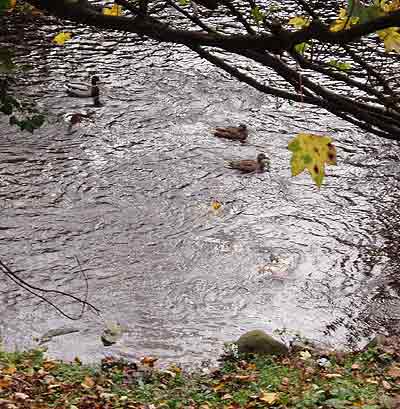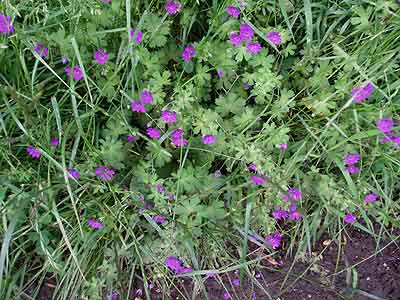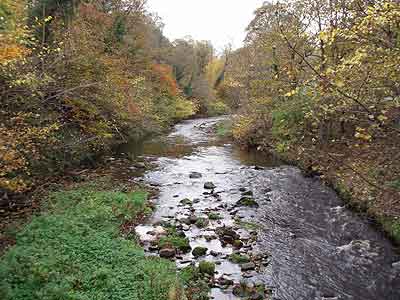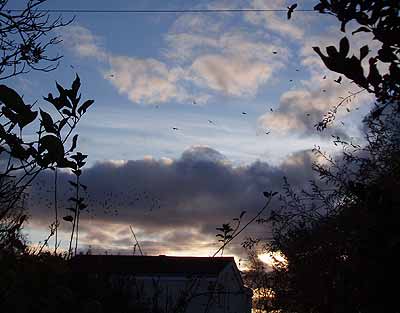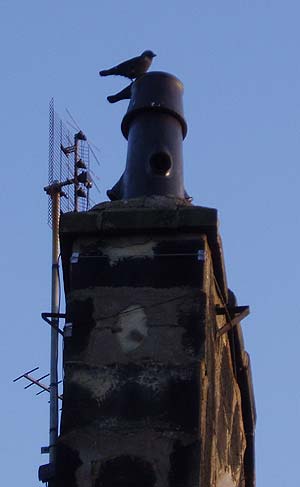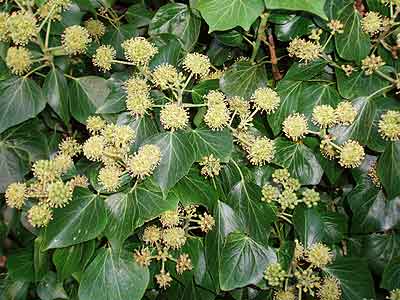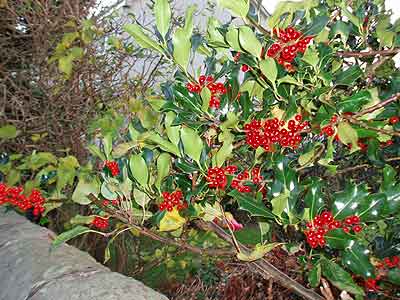Natural History Walk
Dr MacKay's Wood at 2.00 pm on a bright afternoon the place, time and weather for the second natural history walk to be held as part of our three hundredth anniversary celebrations. Fourteen people from very young to somewhat older have gathered to discover Juniper Green's wildlife on a route that leads from Dr MacKay's Wood, down to the weir beneath the city bypass, along the Water of Leith walkway, up the fish shop path, over the Lanark Road to Juniper Avenue and thence to a circuit of Bloomiehall Park, past the Village Hall, finally returning to Juniper Avenue along Belmont Road.
At the top of the path by the main road the first things we notice are green alkanet and feverfew still in flower. Both were valued in the past, the leaves of feverfew as the cure-all of traditional medicine, while alkanet's roots yielded the henna dye which adorned the ladies of ancient Egypt. On the other side of the path blackbirds are fattening up for the winter on hawthorn berries.
The recently planted trees in the wood, all native species, have turned to autumn colours, the rowans and bird cherries carrying the fruit that will attract both native and migratory thrushes. They seem to be flourishing; field maple and gean, pale yellow and red, their contrasting leaf shapes make patterns of colour against the grey of dying grasses.
Further down the path leading to the access road to the Woodhall Mill houses, a robin is singing, there are great and blue tits in the bushes, while a dunnock forages discreetly among the fallen leaves. On the way down the road to the Woodhall Mill houses we admire the plump, dark sloes which soon may may be steeped in a bottle of Juniper Green gin, and Heather, aged six and sharp-eyed with it, finds hazelnuts below the bushes. Some of the nutshells have holes in them, evidence of a feast for a wood mouse, while half shells show squirrels have been splitting them to get at the kernels. Just before the bypass bridge is a stand of aspen, pale yellow leaves shivering in the light breeze.
When we arrive at the valley bottom, the Water of Leith, after last night's heavy rain, is a muddy brown torrent pouring in a spate of foam over the weir. A heron sits hunched above the weir pool, but far more surprising is that trout of all sizes are attempting, like miniature salmon, to leap through or over the cascade. The weir is too high for them and they fall back time and again into the frothing maelstrom at its foot.
The river above the weir, murky with its load of silt, is impenetrable to the eye, and the kingfisher, which had been there yesterday, has left to find greater transparency elsewhere. A pair of moorhens engages in a skittery chase along the surface of the pool, landing opposite us and swimming with flicking white tails among the green plants below the south bank. We identify crack willow and white willow, at the river's edge, their overhanging branches favoured perches for hungry kingfishers. Autumn colours are spectacular this year: there hasn't been much wind to bring the leaves down, and the beeches' deep golden bronze makes nearly everything else look pale and insubstantial, though there are splashes of brightness here and there on the steep north facing banks where rowan and bramble leaves flash a seasonal scarlet or crimson.
Just upstream the river has cut a cliff through the sandstone, siltstone and mudstone strata which here overlie the older volcanic rocks of the Pentland Hills and reveal that once this area lay at various times under an estuary, a lake, or a shallow sea. Fallen rocks indicate that the Water of Leith continues actively to undercut its banks and reshape its gorge. Here a large and spectacular beech clings to the crag. The weight of its leaves appears to be dragging it down to the water. An adventurous rabbit, our only mammal of the day, somehow avoids a fall as it moves among the exposed tree roots and rocks.
There is a mass of butterbur on the near bank, seeds covered in giant Velcro hooks designed to catch in an animal's fur or wool, large rounded leaves perforated by insects and no longer fit for wrapping the butter from which it gets its name. The yellow flower head of a remaining ragwort reminds us of summer. In the water the rocks, favourite perches of a dipper that holds a territory on this stretch of river, are mostly submerged beneath the rushing stream. No sign of a dipper here today. Turning to examine the grassy area sown with a meadow flower mixture by the developers of the Inglis Mill site, we find late flowering poppies and scentless mayweed.
Next an expectant wait by the bend in the river for one or more roe deer to appear in the field on the other side. Two were here yesterday, lying in the sun, but today they stay in hiding.
Further on the golden leaves of a horse chestnut sapling contrast with the grey, shrivelled foliage of the predominant sycamores that clothe the valley on this stretch, while the rampant ivy, covering trees and shaded banks with dark green, together with the holly, which is also common along the river, provides a slightly sombre, wintry reminder of the vigorous life of the woods. The ivy is in flower, an important source of food in autumn for flying insects, in turn preyed upon by small birds such as the robins and wrens, which are fattening up against leaner times to come.
A robin sings from the bushes, warning other robins to stay away from its winter territory which it will defend aggressively. There are familiar mallard on the river, used to pedestrians on the walkway and scarcely bothered to move on our approach, taking grudgingly to the water, as if for form's sake only, because swimming is expected of ducks.
Elder, ash, birch and wych elm crowd each other among the sycamores, especially where more light penetrates along the old railway line, and, on damp ground along the river's course, goat willow flourishes. We see the pink flowers of herb robert by the path and the sky blue of water forgetmenots on the islets in the river. Dippers are here by the Woodhall footbridge. We stand on the bridge to watch one dropping from the rocks in midstream and submerging to hunt for invertebrates among the riverbed stones, popping out again and then diving once more. A second bird flies hastily past: dippers are intolerant of one another outside the breeding season.
As we climb the bank to reach the main road, the "chack-chack" of jackdaws, interspersed with the cawing of rooks, can be heard above the traffic. At this time of year resident birds are joined by migrants from the continent and it is normal to see up to 300 noisy jackdaws wheeling above the rooftops. Some settle in pairs on the chimney pots that will be nested in when spring comes. The western end of the village is preferred and here jackdaws cluster in the trees and on chimneys, never staying still for long and often flying up in sudden ‘dreads', whirling up into the sky and calling as if in alarm. Rooks and jackdaws flock together in autumn and winter, but this year in Juniper Green the rooks are greatly outnumbered by their smaller cousins.
The noisy chatter of house sparrows, not nearly as common a sound as it used to be, greets us in Juniper Avenue. Some good soul must be feeding them. Small parties of starlings, another bird that has become scarcer, fly westwards, probably heading for their roost on the electricity pylons. There's more ivy in full flower on the walls of the path leading to the park. On mild, calm evenings the attractive scent is strong.
The stubble field west of the park is busy with feeding rooks, jackdaws, woodpigeons and feral pigeons. The belt of conifers separating the field from the golf course is laden with cones, leading one to hope that Juniper Green's first ever crossbills might visit. The eastern fringe of the park is dense with berry bearing trees and bushes. We are astonished at the profusion of fruits available to the birds this autumn from holly to yew, to hawthorn, to various strains of sorbus, malus and cotoneaster. A large holly in the corner has become the preserve of a missel thrush prepared to defend its private larder against all comers. At present successful, it will be overwhelmed as food becomes scarcer and weather harder, when sheer numbers of blackbirds, fieldfares and redwings make continued resistance impossible. At present the blackbirds are concentrating on hawthorn, and the redwings, which have arrived in their thousands from Scandinavia, are fattening up after their exhausting journey on the pinkish-red berries shining among the dark foliage of a yew that stands near the south east exit from the park. A party of long-tailed tits flits through the upper branches of the birches, calling constantly. A hunting sparrowhawk jinks between the trees and flips over the hedge on our left as we leave the park. Not even the magpies have seen it in time to raise the alarm.
On the last leg of our walk in the fading light we find the yew trees in the gardens of Belmont Road full of redwings and blackbirds gulping down the berries, stuffing themselves before night falls. Redwings are vulnerable to hard weather and, despite their Scandinavian origin and North Sea crossing, many will not be tough enough to survive the Scottish winter. They need all the energy they can get from the harvest they are garnering from our gardens and hedgerows.
As we return home we reflect on our good fortune to live in a village that has such a variety of rich habitats where there is so much to interest the observant naturalist. Certainly, this tercentenary autumn, Juniper Green's human inhabitants and its wildlife are enjoying an exceptional season of ‘mellow fruitfulness'.

